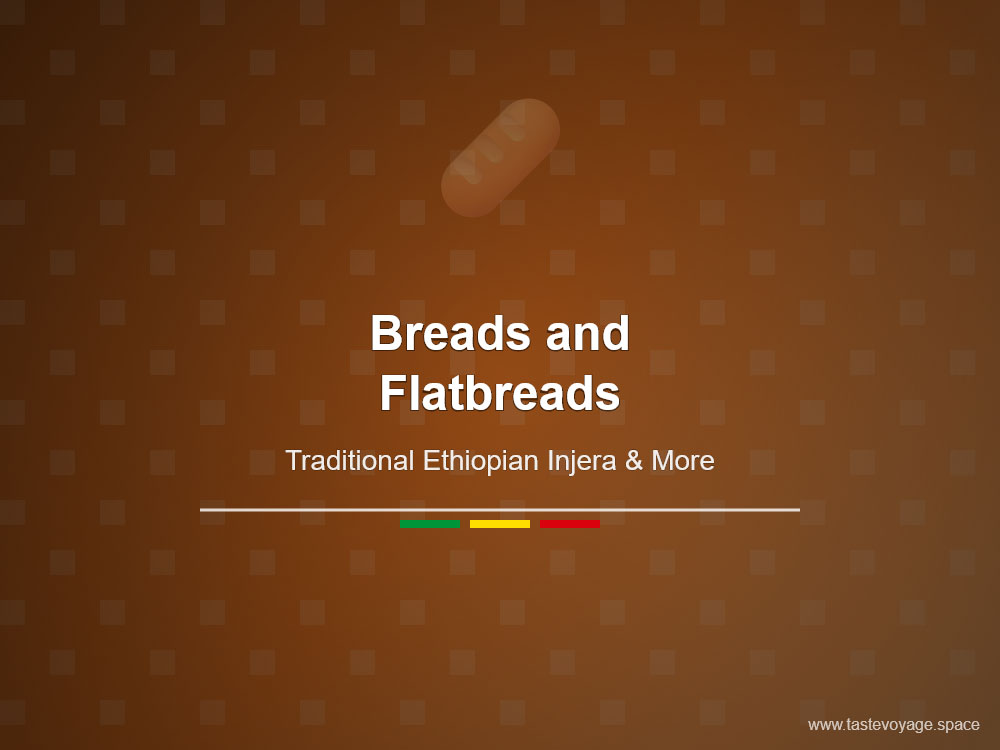How to Make Authentic Ethiopian Mixed Grain Flatbread
Travel the World Through Food >> Breads and Flatbreads>>Ethiopian Cuisine>> How to Make Authentic Ethiopian Mixed Grain Flatbread
How to Make Authentic Ethiopian Mixed Grain Flatbread
Discovering the Cultural Richness of Ethiopian Mixed Grain Flatbread
Ethiopian Cuisine is renowned for its vibrant flavors, unique ingredients, and deep-rooted culinary traditions. Among its many treasures is a delightful dish known as Ethiopian mixed grain flatbread. This traditional bread embodies the spirit of Ethiopian food culture, highlighting the importance of grains and communal eating. It’s more than just a staple; it’s a symbol of history, agriculture, and shared heritage.
A Reflection of Ethiopia’s Agricultural Heritage
Ethiopian mixed grain flatbread showcases Ethiopia’s rich agricultural landscape. The dish is typically prepared using a blend of locally grown grains such as teff, barley, millet, and wheat. Each grain contributes its distinct flavor and texture, creating a harmonious balance that is both nourishing and delicious. The diversity of grains used in this flatbread reflects Ethiopia’s longstanding tradition of farming and the country’s abundance of indigenous crops.
These grains have been cultivated for centuries, passing down from generations as essential components of daily life. The use of a variety of grains in the flatbread emphasizes Ethiopia’s agricultural resilience and its farmers’ deep knowledge of the land. It’s a celebration of the country’s natural bounty and a testament to sustainable farming practices.
Significance in Ethiopian Food Culture
Ethiopian mixed grain flatbread holds a special place in the country’s culinary customs. It is often served alongside a variety of stews, vegetables, and lentils, forming the foundation of many traditional meals. The bread’s hearty, chewy texture complements spicy and flavorful dishes, making it an integral part of communal dining experiences.
Eating this flatbread is more than sustenance—it’s a social activity that brings people together. Traditionally, families and communities gather around a shared platter, breaking off pieces of the bread to scoop up communal dishes. This act of sharing fosters a sense of unity and togetherness, reinforcing social bonds and cultural identity.
Culinary Significance and Flavor Profile
The flavor profile of Ethiopian mixed grain flatbread is both wholesome and complex. The grains, especially when mixed, lend a nutty aroma and a subtle sweetness, enhancing the overall taste. The bread’s texture is typically dense yet pliable, making it ideal for scooping up various dishes.
This flatbread also reflects the Ethiopian approach to food—simple ingredients prepared with care and respect for tradition. Its preparation involves fermenting the grains, which adds a slight tanginess and depth of flavor, elevating the bread beyond a mere carbohydrate source.
Embracing a Culinary Tradition
Embracing Ethiopian mixed grain flatbread means appreciating a culinary tradition that emphasizes health, sustainability, and cultural expression. Its versatility and nutritional value make it a cherished component of Ethiopian cuisine, while its cultural significance fosters an appreciation for the country’s rich history and agricultural practices.
In summary, Ethiopian mixed grain flatbread is more than just bread—it is a symbol of Ethiopian heritage, agriculture, and community. Its unique flavor, cultural importance, and historical roots make it a must-try dish for anyone eager to explore Ethiopia’s culinary landscape. Whether enjoyed as part of a traditional meal or appreciated for its cultural significance, this flatbread offers A Delicious window into the heart of Ethiopian food culture.
